Last Updated on June 13, 2022
If you’re not a mechanic, you might’ve never heard of a brake booster before. But the truth is that your car likely has one, and if it stops working, you’re going to notice.
Whether you’re curious about how they work, signs to look for in a faulty brake booster, or you’re trying to figure out how much money it’s going to cost for a replacement, keep reading.
What is a Brake Booster?
Just like your power steering makes it easy for you to turn the steering wheel, your brake booster makes it easy to press the brakes. Brake boosters amplify the amount of force you apply to the pedal to the brake calipers or drums, making it easier to stop on a dime.
There are multiple different styles of brake boosters – but they all serve the same purpose.
Bad Brake Booster Symptoms
There are a couple of telltale signs of a bad brake booster, and they are pretty easy to diagnose. Even if you can’t tell the difference between a lug nut and a spark plug, you should be able to figure it out after reading the following symptoms!
#1 – Hard Brake Pedal
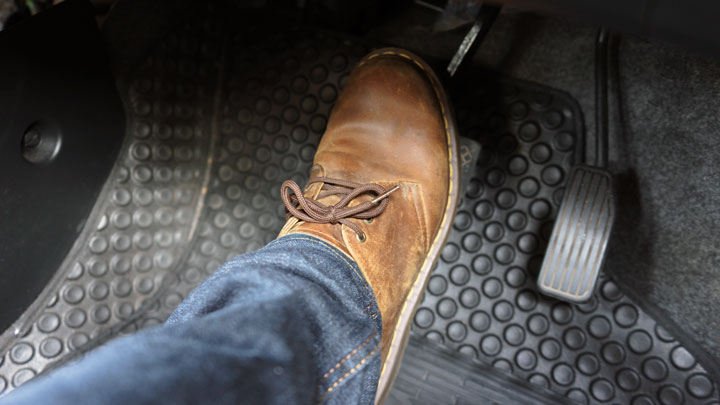
If your brake booster fails, the first thing you’ll probably notice is that it will be hard to press the brake pedal down or it will have a spongy feel to it.
It makes sense. The entire point of the brake booster is to make it easier to press down the brakes. If it fails, then it’ll get harder!
#2 – Increased Stopping Distance and Leaking Brake Fluid
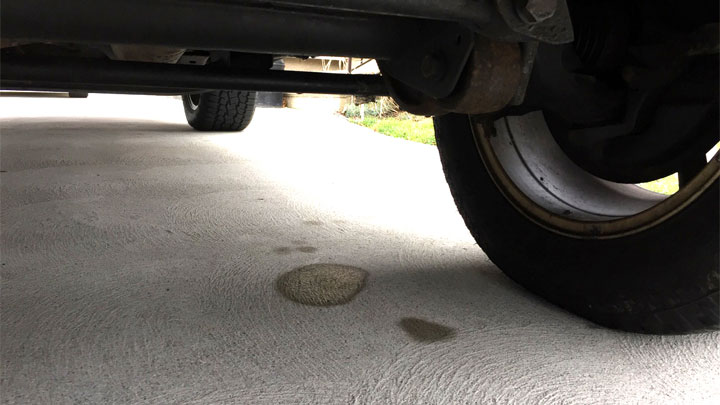
An increased stopping distance isn’t a direct sign of your brake booster failing, but it’s a sign that you need to dig a little deeper.
That’s because if your brake booster is leaking, your brakes won’t work as efficiently. The best thing you can do if you notice that your vehicle’s stopping distance is increasing is to inspect the brake booster for a leak.
If you identify a leak between the brake booster and the master cylinder, you’ll have to figure out which component is leaking. This is close to impossible, which is why many mechanics opt for changing both parts simultaneously.
See Also: DOT 3 vs DOT 4 Brake Fluid
#3 – Hissing Noises

If your brake booster is vacuum operated, you might hear a hissing noise when you depress the brakes. This indicates that your brake booster has a vacuum leak, which will prevent it from working effectively.
#4 – Illuminated Warning Light(s)
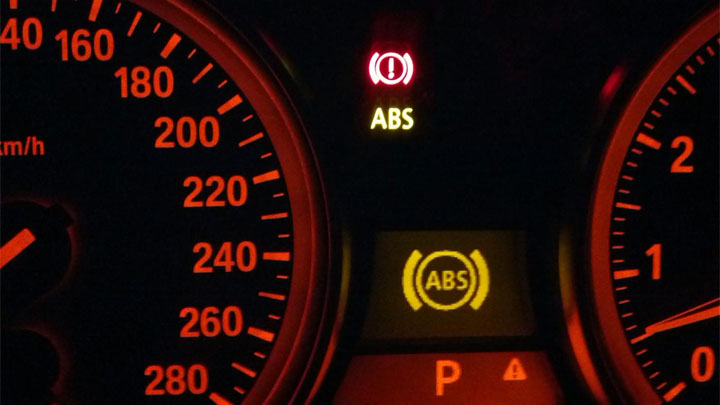
Depending on the type of vehicle you drive and the built-in safety features, you might have a wide variety of different lights illuminate on your dashboard if you have a faulty brake booster.
The most common light is the ABS light, but your traction control light, check engine light, and stability control lights all might turn on.
Can You Drive with a Faulty Brake Booster?
The short answer is yes. The full answer is a bit more complicated.
Many cars don’t have a brake booster, so you can still drive without any vital problems if yours isn’t working correctly. All you’ll have to do is press down extra hard on the brakes when you want to stop.
However, all that depends on what is wrong with your booster. If it’s leaking brake fluid, you absolutely should not drive your car with it. Leaking brake fluid will lead to decreased braking performance – a significant problem.
Furthermore, your leak can go from a trickle to a waterfall at any moment and you might not be able to stop at all. Finally, if you do need to stop in an instant, you don’t want to worry about whether or not you can press down on the brakes hard enough.
So, yes, you can drive with a faulty brake booster, but we can’t recommend it.
Brake Booster Replacement Cost
Best places to order parts? See: 19 Best Online Auto Parts Stores
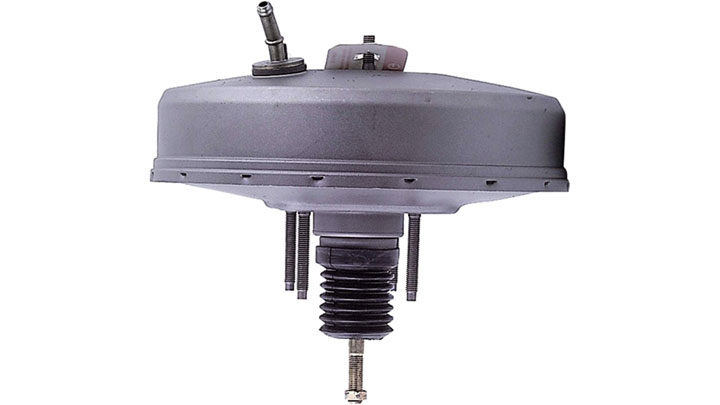
Replacing your brake booster isn’t the cheapest job in the world. The total costs for parts and labor typically range between $500 and $800 for everything you need to get on the road again. These costs will vary depending on where you take your vehicle and what kind of vehicle you drive.
If you’re willing to do the work yourself, a new brake booster typically costs between $100 and $150, but if you drive a bigger vehicle, they can cost up to $300 or more. Keep in mind that you will need to change your brake fluid and bleed your brakes – which is another 20 to 40 dollars in part costs.
Meanwhile, the labor costs for these services usually ranges between 300 and 400 dollars to replace your booster. However, since they will need to bleed your brakes too, you need to add another 75 to 100 dollars to that estimate.
If your brake booster is leaking from the check valve, you might get lucky and just need to order a check valve and grommet kit. These typically cost under 10 dollars, but you will need to replace your brake fluid too.
Related: DOT 5 Brake Fluid Compatibility
How to Test a Brake Booster
There are two simple tests you can utilize to check if your brake booster is working correctly.
Test #1
The first test tells you if the brake booster is amplifying your braking pressure as it should.
- With the engine off, pump your brakes by depressing the brake pedal a few times until the pedal gets stiff.
- Once the pedal is stiff, keep pushing down while starting the engine.
- The pedal should depress a little more after starting the engine. If it does, then your brake booster is working correctly.
- If the vehicle fails this test, it has a faulty brake booster.
Test #2
- For the second test, all you need to do is start the engine and depress the brake pedal.
- Turn off the engine while keeping the pedal depressed.
- If it doesn’t drop to the floorboard after 20 to 45 seconds, your brake system is airtight – including your brake booster.
- However, if the brake pedal falls to the floorboard, it doesn’t necessarily mean that your brake booster is the problem.
- You’ll need to rule out any other potential leaks in the system before identifying your brake booster as the problem.

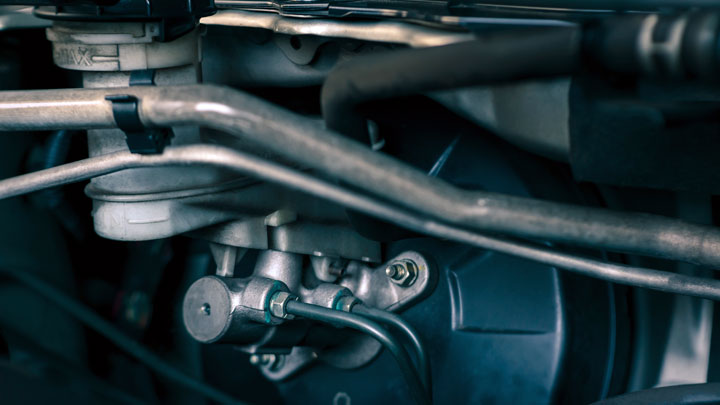



Thank you so much for your info. I truly love the way that you explain how the system works and how to troubleshoot it yourself and how you give up to date pricing on parts and labor. The main thing is how you give wisdom to the consumer
Thanks for the feedback, glad you liked it!
Thank you for the education. I don’t know much about cars and this really helped me understand what seems to be happening with my vehicle. At least now I know what I should do next. Good info and very helpful.
Glad it helped you out!
Hello,
My break pedal is very stiff when I start my car, but as soon as the engine is on it depresses. Could this be a sign of a faulty brake booster? This has started recently—previously the pedal would depress easily before I pushed the ignition button. This also seems to be a random occurrence but is happening more frequently. If I do not drive for a day or so it is so hard that it takes me multiple tries to start the car. I do not have any trouble breaking when I am driving though. I recently got the radiator replaced and wonder if maybe the brake booster was damaged somehow?
Your brake booster only works when the car is on. Generally there will be a little vacuum left in the system, so you will have enough assist to depress the brake pedal once or twice before the pedal goes firm again. If your pedal is always stiff when the car is off, I would check the brake booster and make sure you don’t have a leak in it, or any of the vacuum lines that feed it.
Mine if you have to stop in a hurry the pedal is hard but if you ease into it it will stop good
Definitely could be the brake booster. I would get it checked out.
Replaced both front calipers and lines, drive about a mile and the front brakes lock, undrivable. Can release pressure with the pressure release valve. Booster issue?
Are you saying the brakes lock without applying any brake pressure?
Most likely the brake calipers are getting stuck when you apply the brakes. When new pads are installed the piston inside the caliper gets corrosion and dirt on it and after the new pads are installed the piston is pushed back into the caliper along with the dirt and gets stuck against the new pads when stopping. You can check it by touching the metal rim that the tire is on and if it’s really hot the caliper is stuck. Best thing is to replace both right and left calipers. You might be able to take it apart and clean it using some fire steel wool but it rarely works because the piston has bumps on it from corrosion. (the caliper contains a round piston that forces the pads against the brake rotor, the rotor is a round disc attached to the wheel hub. If you replaced the pads yourself replacing the calipers isn’t that difficult. Good luck!